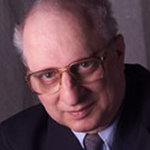January 1, 2015
What is new about shock treatment for mental illness?
Is electroshock therapy, or electroconvulsive therapy (ECT), for mental illness like a scene from the movie "One Flew Over the Cuckoo's Nest?"
On the contrary, said Dr. Lisa McMurray. It is, she argued, an important tool in treatment, especially in clinical depression but also in schizophrenia. In English-speaking countries and much of Europe, ECT is for the most part used primarily in depression, while in much of the rest of the world schizophrenia is the primary target.
While seen as effective with clinical depression, it is not effective with less severe despondency, or with personality disorders.
She contended, in her talk on December 18 at a public education event at the Royal Ottawa Hospital, that it has proven useful especially with the most severe cases of depression.
In order to be effective, ECT must produce a seizure. It does this by running a small electrical current through the brain. The patient is anesthetized to relax the muscles and an EEG (electroencephalogram) is attached to verify that a seizure has been produced.
ECT appears to work by interfering with the communication between neurotransmitters and receptors in the brain. While it has been charged that ETC destroys brain cells, just the reverse has been found. ECT actually stimulates brain cell growth.
The history of creating seizures to treat mental illness goes back, according to McMurray, to the 1920’s.
It began with the erroneous belief that epileptics have a lower rate of mental illness. So why not induce seizures? Originally various drugs were used to create seizures, especially insulin. Insulin therapy, however, risks causing a dangerous lowering of blood sugar levels. ECT, introduced in the following decade, has proven to be safer than insulin. It is also less unpleasant than other drug-induced seizures.
ECT can be administered either inpatient or outpatient. In cases of clinical depression, it is effective from 80% to 90% of the time. While in the earlier years of treatment there were instances of broken bones because of muscle rigidity during the treatment, current use of anesthesia eliminates that danger. As nurse Domenica Palermo told the session, the procedure is quick, often leaving patients surprised that it was already over.
So what are the negatives?
Perhaps the biggest is the perception both of the general public and of some health professionals that is a brutal treatment reminiscent of “One Flew Over the Cuckoo’s Nest,” akin to lobotomy.
Dr. McMurray conceded that in the past it might have been overused, noting that some have charged that at times it had been used as punishment. But there are other problems.
In rare cases (1/ 10,000), she said, it is fatal. A more common complaint is that of memory loss. Often the memories lost are not important, but sometimes they are. And some lost memories eventually return. On the other hand, depression itself can cause memory loss, as can medication.
New ECT machinery lessens memory loss; with one machine administering the electricity on just the right side of the head rather than bilaterally. As well, the length of electrical waves has been shortened for better results.
A significant drawback of ECT is that of frequent relapse, requiring additional treatments. Thus, ECT alone is not sufficient. Medication and psychotherapy, for example cognitive behavioral therapy (CBT), are also needed.
McMurray also spoke of other forms of brain stimulation that are emerging. Transcranial magnetic stimulation does not produce a seizure, and at this point in its development has produced less satisfactory results than ECT. Deep brain stimulation is a new approach just now being investigated.
According to McMurray, “ECT is one of the best treatments,” but she finds few medical residents interested in it. That does not bode well for its continued usage. As well, “Quality is quite spotty across the country.” She sees a need to establish a uniform standard of practice with ECT.








